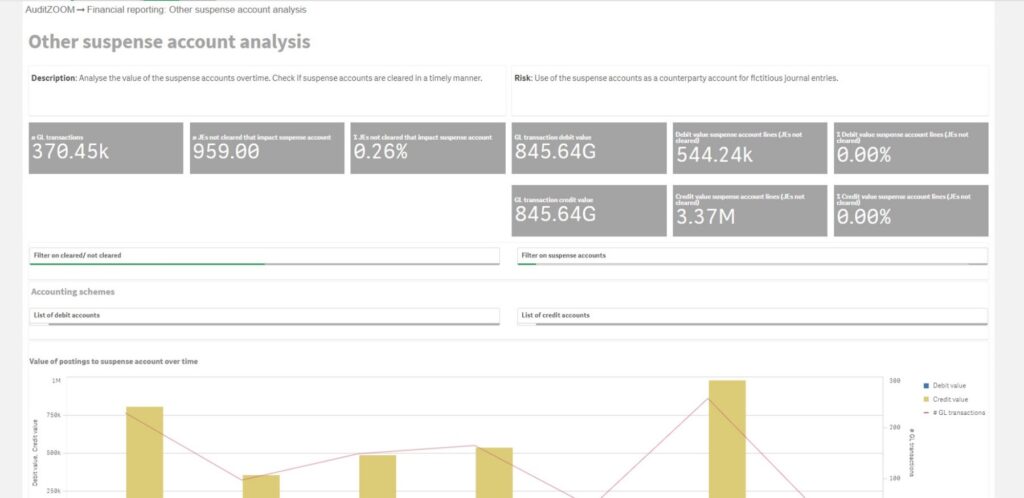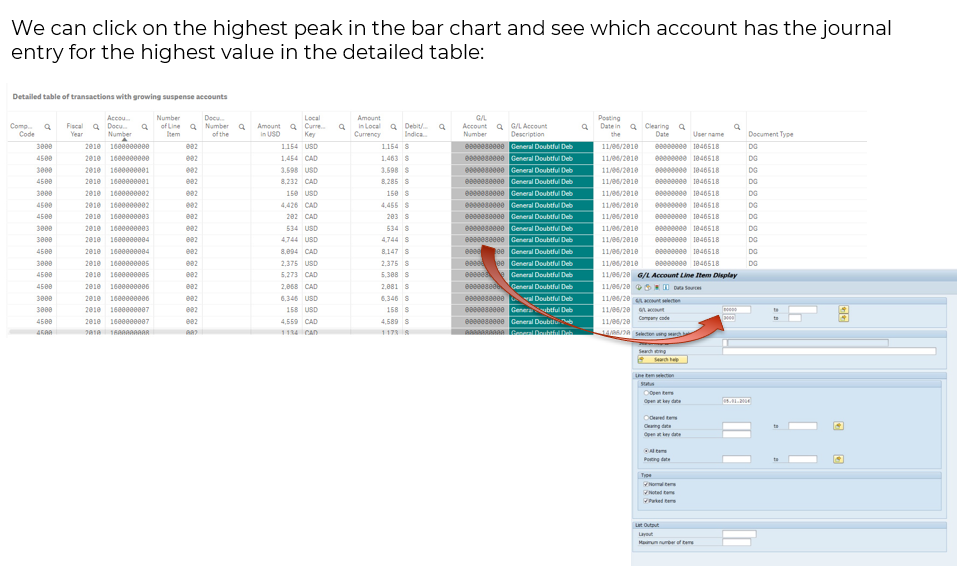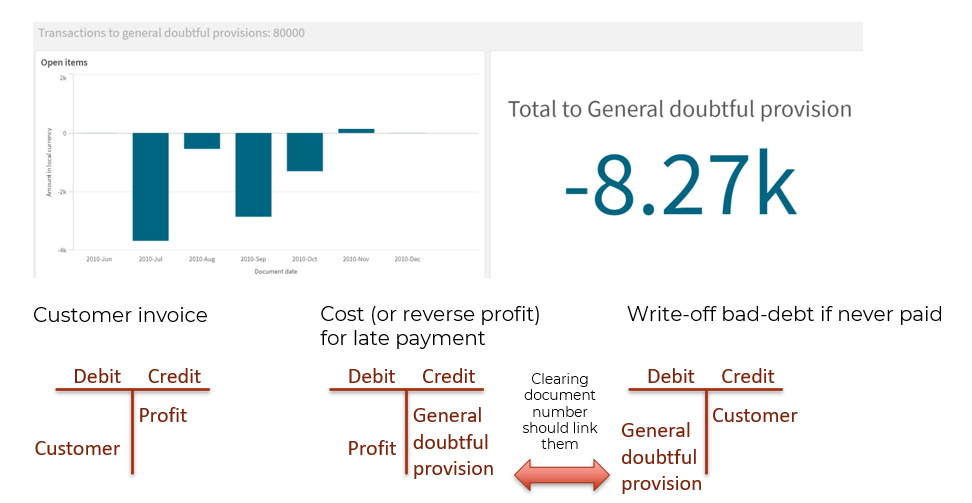FBL3N: List of transactions per GL account
That can be quite interesting if you want to see what’s going on with a particular financial transaction, right? And in general ledger account, we’ve got a transaction code called FBL3N. And FBL3N is going to help us to look for doubtful debtors or any other strange general ledger account.

If we look under the filter, we can see, all right, so this is doubtful debtors. It’s quite an interesting account. So let’s have a look at that one.
So if you’ve got accounts like that, suspense accounts particularly, and you want to have a quick check on, you know, what’s going on with that suspense account, what you can do is actually just copy that account number into FBL3N. And when you do that, you can have a look at all of the transactions that are happening for FBL3N. So when we have a look at FBL3N, we get all of the list here and we can just go to system, list, save, and then put it in a local file.
That way we get everything that’s like debiting and crediting this particular general ledger account. And then once we get that, we’ve got a little text file here. So this is text file of those postings for this particular general ledger account.
Then we might want to put it into some kind of data visualisation. So here we’re like actually doing the reverse. So instead of doing only the data analytics first and going into SAP to check something, here we’re like, oh, we’ve got some data analytics showing something a bit strange about a particular account, want to see everything else that’s going on with the account.

And then we extract it from SAP and then we’re putting it back into data visualisation tool. And then we can do a graph. So on this graph, we can see like everything that’s happening to this particular account. And it’s not only the things that are not clear, it’s just everything because it just decided to take everything. And here we can see everything is happening for general doubtful debt. So general doubtful provision, I think it was the name of it.

So what we’re trying to explain here is like, what’s the point of this? So you got these accounts, the general doubtful provision. Sounds like it might be interesting because it’s like where you write off your customer debt. So if you’ve got a customer that’s a friend, you might want to write off their debt and then they’ll be happy about it because they don’t have to pay you for whatever it is that they bought.
And so this is the kind of thing that’s quite interesting. So you might be interested in this one because maybe it’s a way of actually keeping profit in one particular period. So, for example, you’ve got your customer invoice here and then normally you would actually reverse that once you actually get your payment or you’re going to write it off.

Maybe you’re going to write off if the customer never actually pays and you’d expect these two things to be linked together. And actually what we find is that for this particular account, nothing is cleared at all. So there is exactly the same number of lines cleared as in taking all of them.
So it means that nothing is actually being cleared. So this kind of accounts is something that we quite often do. Like, why would we actually want to know about these types of accounts, suspense accounts? Like he would just say, like, why do I actually care about suspense accounts? And it’s because we can actually use suspense accounts as cookie jar funds.

So maybe it might be that this year you’re like, oh, I’m working so hard in sales, you know, getting all of these sales in this year and profits going up and everything. But I don’t actually want top management to know about all of that extra profit this year, because next year I’m going to work a little bit less and I might want to go to the beach. And so what I’m going to do is instead of leaving all that profit in 2021, I’m actually going to put it in a suspense account for a little while.
Then when I get into 2022, I’m going to take it out again. And during that time, because I know maybe I’m going to do less sales, maybe that’s because I’m planning on going on holiday or I’m planning on doing something else. Could be that you’re planning on like setting up a parallel business or something like that.
So whatever it is, and you’re going to get that profit out of your cookie jar and use it in 2022. And this is so common, like everyone’s always doing this. And so looking at like all the transactions to suspense accounts is really interesting, especially if you see that you’ve got them that are not actually cleared, because when you don’t clear things, it means you don’t do any matching. If you don’t do any matching, then it’s also a good way of hiding what’s going on.
Here’s quick tips about you can change the layout and you can change the display. So some little buttons that might find interesting.
